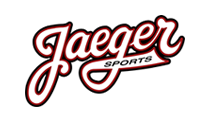Serve and Forehand: Two Different Kinds of Sling-Shot
The first is a WHAMO consisting of a "Y" and elastic connecting the two upper prongs. The second, in my secular view, is the type used by David to slay Goliath.
Supposedly, David whirled a rock round and around and then released it on the desired tangent.
To serve, one keeps a stiff left arm upraised from which one has wound the racket back in a circle, using scapular retraction in both shoulders.
To hit a forehand, one can, with rhythmic motion, post the opposite arm in an advantageous place and similarly use muscles across the front of the chest to abruptly change direction of the hitting hand from forward to sideward as previously discussed.
This plan, in a straight arm forehand started from high ice cream cone position (for discussion of this see previous posts) makes me want, naturally, to keep slight bend in left arm as straight right arm separates to form hold position (a running hold in most cases).
Left arm then, as it smooths the waters, also becomes straight like left arm in a serve and helps arch the back again through scapular retraction in both shoulders.
"Stretch-shorten cycle" as useful tennis buzzword practically dictates this.
If, like me, you seek the most powerful way to suddenly make hitting hand veer left, this is the way, the sling-shot way, to do it.
The first is a WHAMO consisting of a "Y" and elastic connecting the two upper prongs. The second, in my secular view, is the type used by David to slay Goliath.
Supposedly, David whirled a rock round and around and then released it on the desired tangent.
To serve, one keeps a stiff left arm upraised from which one has wound the racket back in a circle, using scapular retraction in both shoulders.
To hit a forehand, one can, with rhythmic motion, post the opposite arm in an advantageous place and similarly use muscles across the front of the chest to abruptly change direction of the hitting hand from forward to sideward as previously discussed.
This plan, in a straight arm forehand started from high ice cream cone position (for discussion of this see previous posts) makes me want, naturally, to keep slight bend in left arm as straight right arm separates to form hold position (a running hold in most cases).
Left arm then, as it smooths the waters, also becomes straight like left arm in a serve and helps arch the back again through scapular retraction in both shoulders.
"Stretch-shorten cycle" as useful tennis buzzword practically dictates this.
If, like me, you seek the most powerful way to suddenly make hitting hand veer left, this is the way, the sling-shot way, to do it.








Comment